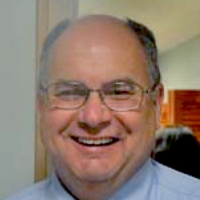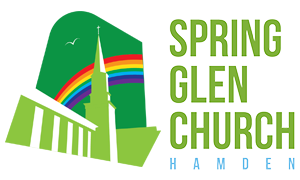Sermon

The Rev. David Minnick
Sunday, March 1, 2015Text: Mark 8:31-38
Sermon Text
I don’t know when I’ve been as eager to turn the page of a calendar as I was this morning. This has been a February I am glad to see come to an end and today, we gather on the first day as well as the first Sunday in March. Looking ahead, when we gather in four weeks, on the 5th and last Sunday in March, it will be Palm Sunday.
I believe whenever we think of Palm Sunday, we think of the Jesus’ triumphal entry into Jerusalem on a warm sunny day. There are no snowbanks in Jerusalem on Palm Sunday. Instead there is a spirited crowd, bringing coats and blankets to lay in honor of Jesus. In my mind, there are young men, climbing trees to cut palms and branches to toss down. The sun is out, the crowd festive, the Roman soldiers getting concerned. And I suspect for most of us, the images in our minds and in the art from Sunday school curricula and special Palm Sunday bulletins, depicts the joyful crowd, gathering in great expectation.
The one historical piece that I’ve never seen shown in the images of Jerusalem at that time, but which history tells us were very present, were the crosses that lined the roads in and out of the walled city. Crucifixion was not an uncommon occurrence in those days. It was a brutal and horrific way in which Rome sought to leave no doubt as to where the power lay in that land. And on the roads would be crosses, from which the condemned hung until death. Corpses were left to decay or to be scavenged by animals or birds. Citizens of Rome, convicted of high crimes or treason, were beheaded, since crucifixion was considered too cruel a punishment for them. Only those who were not citizens were crucified.
Crucifixions were so gruesome that they took place outside the city. It was an horrific form of execution, designed to prolong suffering and terrorize the citizenry. After the humiliation of having to carry the crossbeam, to which one would eventually be attached with ropes or nails, through the city and facing the stares at best and taunts of others, the crossbeam would be raised up and attached to a pole. Legs would be broken to help to hasten death. For you see, as gravity pushed the weight of internal organs together and downward, making it harder and harder for the lungs to expand, the person who was suffocating would instinctively push down on broken legs to relieve the pressure in order to take a breath, and suffer incredible pain in the process. The word “excruciating” is translated “out of crucifixion,” an apt description of the horror of this form of death.
This past week, in our Monday afternoon Bible study, we began to look at Paul’s effort in I Corinthians to understand that tragedy of Jesus’ death in light of the resurrection. This letter is the beginning of Paul’s effort to form a theology of the cross. And in the conversation that followed, we realized how especially challenging it must have been to craft a theology that proclaims how God’s power and love are revealed in the cross, how the resurrection transforms the cross from a symbol of horror to one of hope, at a time when people were still being crucified.
The cross was not recognized as a symbol of God’s power until Constantine converted to Christianity in AD 313. His conversion came about when he saw a cross in the sky, declared himself a Christian and commanded the cross from then on to be the symbol of Christianity, ordering that crosses be painted onto the shields of his soldiers. From that time forward, he also banned crucifixion as a means of execution in the Roman Empire. CS Lewis once commented that the cross did not become a symbol in religious art until anyone who had ever witnessed one had died.
The horrors of the crucifixion, too often softened over the centuries in art, came back to me in all its power recently. Two weeks ago, the world was shocked to see the film of 21 Coptic Christians being led to their death, by beheading, on the shores of Tripoli in Libya. Desperate for work, these 21 men had left the safety of their homes in Egypt, in pursuit of jobs as day laborers in Libya, knowing that there were risks in doing so. Most of them were residents of a small town named Al Aour, three hours north of Cairo. Desperate for work to support their families, they traveled to Libya, living simply and sending home their earnings.
And so, as we come today, to hear and make sense for our lives and faith, the impact of Jesus’ call to discipleship today, at a time when crucifixion may be too foreign a horror, maybe we need to re-phrase and hear the familiar words, “take up the cross and follow me” in the light of these 21st century martyrs. “Take up the sword that will end your life in a gruesome way and follow me.”
Two thousand years after they were said, and in the comfort of a nation with guaranteed religious freedoms, in the Sanctuary of a church in the Constitution State, the challenge of Jesus’ call to follow can be easily minimized. And yet we gather today to hear Jesus’ call and determine how best to follow in the way of faith.
We are blessed to be in a land and a time when the challenge of taking up the cross will not likely call for the level of sacrifice that it did in Jesus’ time. Which makes it all the more challenging to us to find the ways, in the course of our days, to deny ourselves and to follow. We are challenged to sort out how we might lose our life for Jesus’ sake, and discover that in doing so, we will find it renewed and more glorious.
How we choose to sacrifice, how we choose to put the needs of others ahead of our own, how we choose to embrace suffering that others might be spared, are questions left to us each to answer in our ways. Living more simply, nurturing a grateful heart, sharing more freely and eagerly the blessings we know are some ways. Embracing the challenge of living an ethical and moral life, avoiding the shortcuts, the many ways each day we may whisper to ourselves, “the ends really do justify the means” are others.
Pastor Janet Hunt, commenting on the demands of this lesson notes, “The dying that Jesus calls us to can be made up of big actions and small ones. For many of us, this 'dying' may be experienced much more in the mundane day to day as we heed that call and choose to be and do for others. As much as anything else:
It may be in the listening rather than speaking first;
It may be in the meal prepared and shared;
It may be in the snow shoveled for a neighbor, the lawn raked for a friend, the cookies baked and delivered to someone whose day it will brighten;
It may be in the hospital call made, the funeral visitation line endured, or the repetitive conversation shared with someone suffering from dementia when you can think of a thousand seemingly more rewarding other obligations calling your name” (Janet Hunt, “Picking Up My Cross,” website)
As we gather together this day, as we find our places at the table to which Christ calls us and where Christ serves as host, may we be ever mindful of this call to sacrificial living. In the UCC Statement of Faith, we acknowledge “the cost and joy of discipleship.” This is a day, Lent is a season, when we are bold to focus on the costs of discipleship.
I believe most Sundays when we gather here, and gaze upon the cross that is the front and center of our sacred home, we most likely think of it as Jesus’ cross. Today, our lesson reminds us that it is also ours, to carry and struggle with in the course of our days. “If any want to become my followers, let them deny themselves and take up their cross and follow me. For those who want to save their life will lose it, and those who lose their life for my sake, and for the sake of the gospel will save it.”
In the days ahead, may we each be blessed to find ways to make this challenging news to be good news for us in our lives and faith. And may we be bold enough to embrace the sacrifices of daily living so that we may know the promise of full and abundant life. This is our good news to discern this day. Thanks be to God. Amen.


